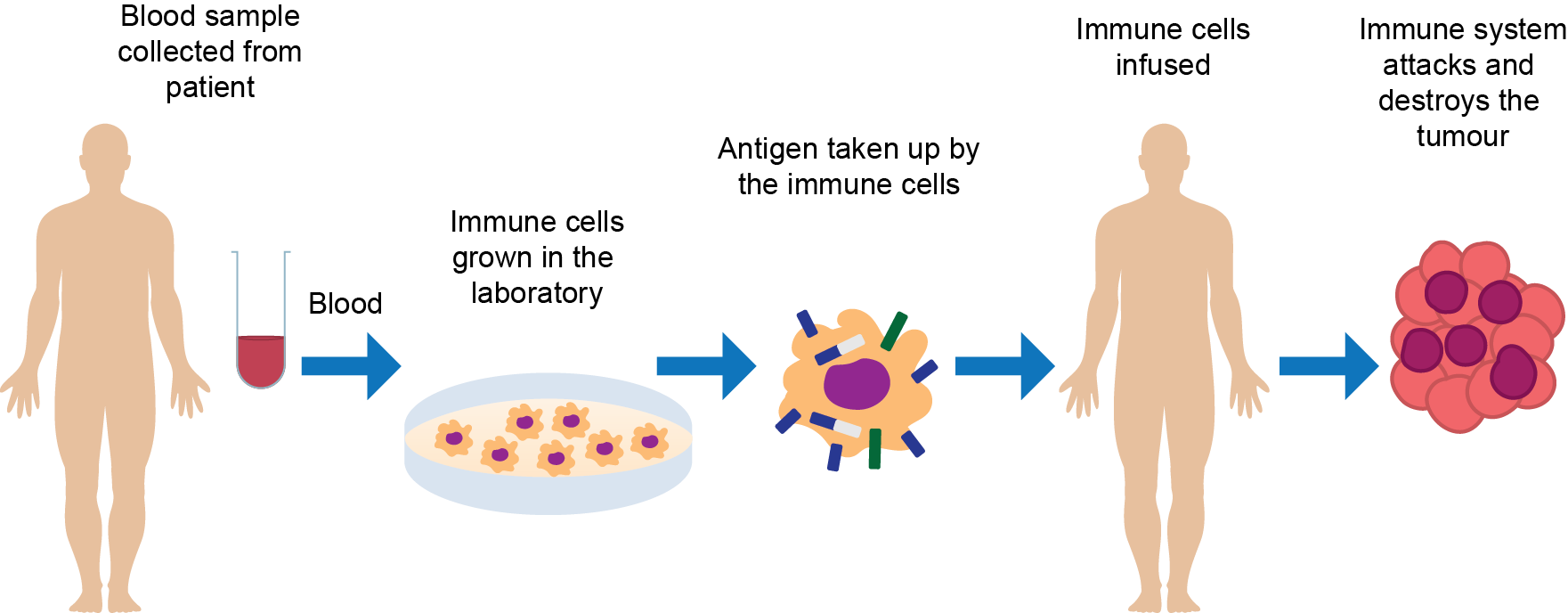Vaccines
6. Example - Cancer vaccines
The first preventive cancer vaccines, such as human papillomavirus vaccine, act against the human papilloma virus (HPV) which can cause cervical cancer. Human papilloma virus (HPV) is a family of viruses. Some types cause cold sores, warts and verrucae, while others can lead to cancer. Two types of HPV, types 16 and 18, are responsible for over 70% of cases of cervical cancer. Three doses of the vaccine are administered by intramuscular injection over a 12-month period. The most common side effects are pain, swelling and redness at the injection site and headache. In clinical trials in young women with no evidence of previous infection, HPV vaccines were over 99% effective at preventing pre-cancerous lesions associated with HPV types 16 or 18.
Sipuleucel-T is the first approved therapeutic cancer vaccine. It is used in men with metastatic castration-resistant (hormone-refractory) prostate cancer with either no or minimal symptoms. Most prostate cancers express a protein called prostatic acid phosphatase (PAP) on the surface of their cells. The immune system does not normally recognize PAP as foreign and so does not attack and destroy the cancer cells. The process for treating patients with the sipuleucel-T vaccine involves firstly taking blood from a patient and extracting some of the blood cells in the laboratory (Figure 2). These blood cells are then grown in the laboratory alongside a special version of PAP that has been modified by being attached to another molecule called granulocyte-macrophage colony-stimulating factor (GM-CSF). The PAP antigen and GM-CSF are taken up by the immune cells within the blood cells being grown in the laboratory, at which point the GM-CSF helps to activate them. The activated immune cells are then infused back into the patient. These cells interact with other components of the immune system and instruct them to identify the prostate cancer antigen (PAP) as foreign, thereby vaccinating the patient against the prostate cancer. The immune system therefore attacks and destroys the cancer.

Figure 2. Sipuleucel-T vaccine. Immune cells are extracted from a patient’s blood and grown in the laboratory with an altered form of the prostate cancer antigen, PAP, that has been attached to a GM-CSF molecule. The immune cells are activated by the PAP-G-CSF, which become primed to identify PAP as a ‘foreign’ antigen. These cells are then infused back into the patient, where they instruct other immune cells to attack and destroy the tumour . (GM-CSF, granulocyte-macrophage colony-stimulating factor; PAP, prostatic acid phosphatase)